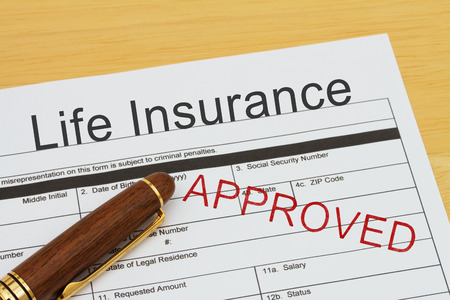1. Understanding the Insurance Dispute Process
Insurance disputes can be stressful and confusing, especially if you’re not familiar with how they work in the United States. Whether you’re a homeowner, car owner, or business operator, it’s important to understand why disagreements might happen between you (the policyholder) and your insurance company (the carrier). Let’s break down how these situations typically unfold and highlight some of the most common scenarios.
How Do Insurance Disputes Begin?
Most insurance disputes start when there’s a difference in opinion about what your policy covers or how much should be paid out on a claim. Sometimes, an insurer might deny a claim altogether, offer less money than expected, or delay payment. On the other hand, policyholders might feel their needs are not being fairly considered or that the terms of their policy are being misinterpreted.
Common Scenarios Leading to Disputes
| Scenario | Description |
|---|---|
| Claim Denial | The insurer refuses to pay for a loss, stating it isn’t covered by your policy. |
| Low Settlement Offer | The insurance company agrees to pay but offers less than what you believe is fair or needed to cover your loss. |
| Delay in Payment | The insurer takes too long to process your claim or issue payment. |
| Disagreement on Coverage | You and your insurer have different interpretations of what your policy includes. |
| Disputed Liability | In cases like car accidents, the insurer argues about who is at fault and how much each party should pay. |
Why Do These Disputes Matter?
Insurance is supposed to protect you from unexpected losses. When a dispute happens, it can delay repairs, medical treatments, or financial recovery. That’s why understanding this process is so important—knowing what to expect can help you respond quickly and effectively.
Key Players in an Insurance Dispute
- Policyholder: The person or business who bought the insurance policy.
- Carrier: The insurance company providing coverage.
- Adjuster: The professional assigned by the insurer to investigate and handle the claim.
- Public Adjuster: A licensed expert hired by policyholders to help negotiate with the insurance company (optional).
- Mediator or Arbitrator: Neutral third parties sometimes brought in to help resolve disputes outside of court.
This high-level overview sets the stage for diving deeper into the specific terms and steps involved in resolving insurance claims disputes across America.
2. Essential Terms and Definitions
Understanding the language of insurance claims is key when youre dealing with a dispute. Below, youll find important vocabulary and phrases commonly used in American insurance claim processes, explained in everyday terms to help you feel confident as you navigate through your case.
Key Insurance Terms You Should Know
| Term | Definition (Plain English) |
|---|---|
| Claim | A formal request you make to your insurance company asking for payment based on your policy after an event like an accident or damage. |
| Policyholder | The person who owns the insurance policy—usually thats you! |
| Deductible | The amount of money you pay out-of-pocket before your insurance kicks in to cover the rest. |
| Adjuster | An insurance company employee or contractor who investigates and determines how much the insurer should pay for your claim. |
| Coverage | The types of protection or risks that your insurance policy includes. |
| Exclusion | A situation or type of damage that your policy does NOT cover. |
| Premium | The amount you pay regularly (monthly, quarterly, yearly) to keep your insurance active. |
| Liability | Your legal responsibility if someone else gets hurt or property is damaged because of something you did or didnt do. |
| Settlement | The final agreement between you and the insurer on how much will be paid out for your claim. |
| Appraisal | An evaluation by an expert to determine the value of what’s been lost or damaged. |
| Denial | If the insurance company refuses to pay for part or all of your claim. |
| Subrogation | If the insurer pays you and then tries to get reimbursed from someone else who was responsible for the loss. |
| Mediation | A process where a neutral third party helps you and the insurance company resolve a disagreement without going to court. |
| Arbitration | A more formal way than mediation where a neutral third party makes a decision about your dispute, which may be binding. |
Phrases Commonly Used During Insurance Disputes
| Phrase | What It Means for You |
|---|---|
| “Proof of Loss” | This is paperwork or documentation you provide to show exactly what happened and what you lost. The insurance company often requires this before they’ll process your claim. |
| “Bad Faith” | If the insurer isn’t treating you fairly, delays payment without reason, or doesn’t investigate properly, this is called acting in “bad faith.” You may have additional rights if this happens. |
| “Reservation of Rights” | This means the insurer will look into your claim but isn’t promising they’ll pay until they finish their investigation. |
| “Underwriting” | This is how insurers decide what policies to offer and at what price, based on risk factors like age, driving record, or home location. |
| “Coverage Limit” | This is the maximum amount your insurance company will pay for a covered loss, according to your policy terms. |
| “Endorsement/Rider” | An add-on to your standard policy that provides extra coverage for specific items or situations (like jewelry or natural disasters). |
| “Third-Party Claim” | This is when someone else files a claim against your policy (for example, if you caused a car accident and the other driver seeks damages from your insurer). |
| “Total Loss” | If repairing something (like a car) would cost more than it’s worth, the insurer may declare it a “total loss” and pay out its actual value instead of fixing it. |
| “Independent Adjuster” | This is an adjuster not employed directly by the insurance company; sometimes used for large claims or disputes to provide an outside opinion. |
| “Public Adjuster” | You can hire one yourself—this professional represents YOU (not the insurer) in dealing with complex claims or disputes, usually for a fee. |
Tips for Using These Terms Effectively
- If youre unsure about any term in your policy or during a dispute, ask your adjuster to explain it in plain English—its their job to help you understand!
- Keep written records of every conversation with your insurance company—use these terms when describing issues so everyone’s on the same page.
- If you hear new phrases during negotiations, don’t hesitate to ask for definitions—you have a right to know exactly what everything means before agreeing to anything.
- Review letters and emails from your insurer carefully; understanding these key words will help you spot important information fast.
Knowing this essential vocabulary puts you one step ahead when navigating an insurance dispute. The more comfortable you are with these terms, the easier it will be to communicate clearly and protect your interests throughout the claims process.
![]()
3. Key Players in Resolving Claims
When dealing with insurance disputes in the United States, its important to understand the different professionals and stakeholders who may be involved in resolving your claim. Each of these key players has a specific role, and knowing who they are can help you navigate the process more confidently.
Adjusters
Insurance adjusters work for the insurance company. Their job is to investigate your claim, assess the damage or loss, and determine how much the insurer should pay according to your policy. They are often your first point of contact after you file a claim.
Public Adjusters
Public adjusters are licensed professionals hired by policyholders (that’s you) instead of the insurance company. They represent your interests and help negotiate with the insurer to make sure you get a fair settlement. Public adjusters usually charge a fee based on a percentage of your claim payout.
Appraisers
Appraisers come into play when there is a disagreement about the value of your loss or damage. Both you and the insurer can hire appraisers to independently evaluate the damages. If both appraisers disagree, an umpire may be used to settle the difference.
Mediators
Mediators are neutral third parties who help both sides (you and the insurance company) try to resolve disputes through discussion and compromise. Mediation is voluntary and non-binding, meaning either side can walk away if no agreement is reached.
Attorneys
If negotiations stall or you believe your rights have been violated, attorneys (lawyers) specializing in insurance law can represent you in court or during settlements. They provide legal advice, prepare legal documents, and advocate on your behalf throughout the dispute process.
Other Stakeholders
Depending on your situation, other people might get involved:
- Umpires: Neutral experts who resolve differences between appraisers.
- Witnesses: People who provide statements about what happened during an incident.
- Contractors: Professionals who estimate repair costs for property claims.
Quick Reference Table: Who Does What?
| Role | Who They Represent | Main Responsibility |
|---|---|---|
| Adjuster | Insurance Company | Investigates and evaluates claims |
| Public Adjuster | You (Policyholder) | Negotiates for higher payout on your behalf |
| Appraiser | You or Insurer | Assesses value of disputed damages/losses |
| Mediator | Neutral/Impartial | Aids both sides in reaching an agreement |
| Attorney | You or Insurer | Provides legal advice and representation |
| Umpire | Neutral/Impartial | Makes final decision if appraisers disagree |
| Contractor/Witnesses | N/A (as needed) | Provide estimates/statements supporting claims |
Navigating Your Claim Team
The insurance claims process can feel overwhelming, but understanding these roles helps you know who to turn to at every stage. Whether youre working directly with an adjuster or bringing in extra support like a public adjuster or attorney, having the right team makes all the difference in getting your claim resolved fairly.
4. Common Procedures and Resolution Methods
When an insurance claim is disputed in the United States, there are several common methods for resolving these disagreements. Understanding these processes can help policyholders and insurers find fair solutions. Here’s an overview of the main resolution methods:
Appraisal
Appraisal is often used when there is a disagreement about the value of a loss or damage. Both the policyholder and the insurance company select an independent appraiser. If these two appraisers cannot agree, they choose a neutral umpire. The final decision depends on agreement between any two of the three.
| Who Is Involved? | What Happens? |
|---|---|
| Policyholder, Insurance Company, Two Appraisers, Umpire | Each side picks an appraiser; if needed, a neutral umpire helps decide. |
Mediation
Mediation brings both parties together with a trained mediator who helps them communicate and try to reach a settlement. The mediator does not make decisions but works to guide both sides toward an agreement. Mediation is voluntary and non-binding unless both parties sign a settlement.
| Who Is Involved? | What Happens? |
|---|---|
| Policyholder, Insurance Company, Mediator | A mediator helps both sides talk things out and look for middle ground. |
Arbitration
Arbitration involves one or more neutral arbitrators who listen to both sides and then make a decision about the dispute. Arbitration can be binding (final) or non-binding depending on what both parties agreed to before the process starts. This method is usually less formal than court but more structured than mediation.
| Who Is Involved? | What Happens? |
|---|---|
| Policyholder, Insurance Company, Arbitrator(s) | An arbitrator hears each side and makes a decision that may be final. |
Litigation
If other methods do not resolve the dispute, either party may file a lawsuit in court (litigation). A judge—or sometimes a jury—will review evidence from both sides and make a legally binding decision. Litigation can be time-consuming and expensive, but it may be necessary for complex or high-value disputes.
| Who Is Involved? | What Happens? |
|---|---|
| Policyholder, Insurance Company, Attorneys, Judge/Jury | The case goes to court where a judge or jury makes a final decision. |
Main Differences Between Resolution Methods
| Method | Formality | Binding? | Cost & Time |
|---|---|---|---|
| Appraisal | Semi-formal | Usually Binding | Moderate |
| Mediation | Informal | No (unless settled) | Low/Quick |
| Arbitration | Semi-formal/Formal | Can Be Binding | Varies (less than court) |
| Litigation | Formal (Court) | Binding (Court Order) | High/Slowest |
A Note About American Practices:
The above methods are commonly used in the United States to resolve insurance disputes. Many states encourage mediation before going to court, while arbitration clauses may be included in some insurance policies. It’s important to read your policy carefully to understand which options are available to you.
5. Tips for Policyholders Facing Disputes
Know Your Policy Inside and Out
Before you take any steps in a dispute, read your insurance policy carefully. Familiarize yourself with the coverage details, exclusions, limits, and claim procedures. Understanding the key terms—like “deductible,” “endorsement,” or “actual cash value”—can make a big difference when discussing your claim.
Document Everything
Keep detailed records of all communications with your insurer, including phone calls, emails, and letters. Save receipts, repair estimates, photos of damages, and any relevant documents. This evidence can be crucial if disagreements escalate.
| What to Document | Why It Matters |
|---|---|
| Photos of damage or loss | Visual proof supports your claim’s validity |
| Repair estimates and receipts | Shows the actual cost for fixing or replacing items |
| Written correspondence with insurer | Provides a record of what was discussed and promised |
| Policy documents and amendments | Keeps track of your coverage details and changes over time |
Communicate Clearly and Promptly
If you disagree with an insurance decision, contact your claims adjuster as soon as possible. Be clear about your concerns and provide supporting evidence. Stay polite and professional—even if you’re frustrated—since respectful communication often leads to better outcomes.
Understand the Dispute Process
Most insurers have formal processes for handling disputes. Ask about next steps such as filing an internal appeal or requesting a review by a different adjuster. Learn about third-party options like mediation or arbitration if you can’t reach an agreement directly.
Common Dispute Resolution Options
| Option | Description | When to Use It |
|---|---|---|
| Mediation | A neutral third party helps both sides reach a settlement. | If direct negotiations stall but both parties want to avoid court. |
| Arbitration | A neutral arbitrator reviews evidence and makes a binding decision. | If mediation fails or is not available; faster than going to court. |
| Lawsuit (Litigation) | The dispute goes to court for a judge or jury to decide. | If other methods fail and the disagreement is significant. |
Get Professional Help if Needed
If you feel overwhelmed or your claim involves large sums, consider hiring a public adjuster or consulting an attorney experienced in insurance law. These experts can advocate on your behalf and help you understand complex policy language.


